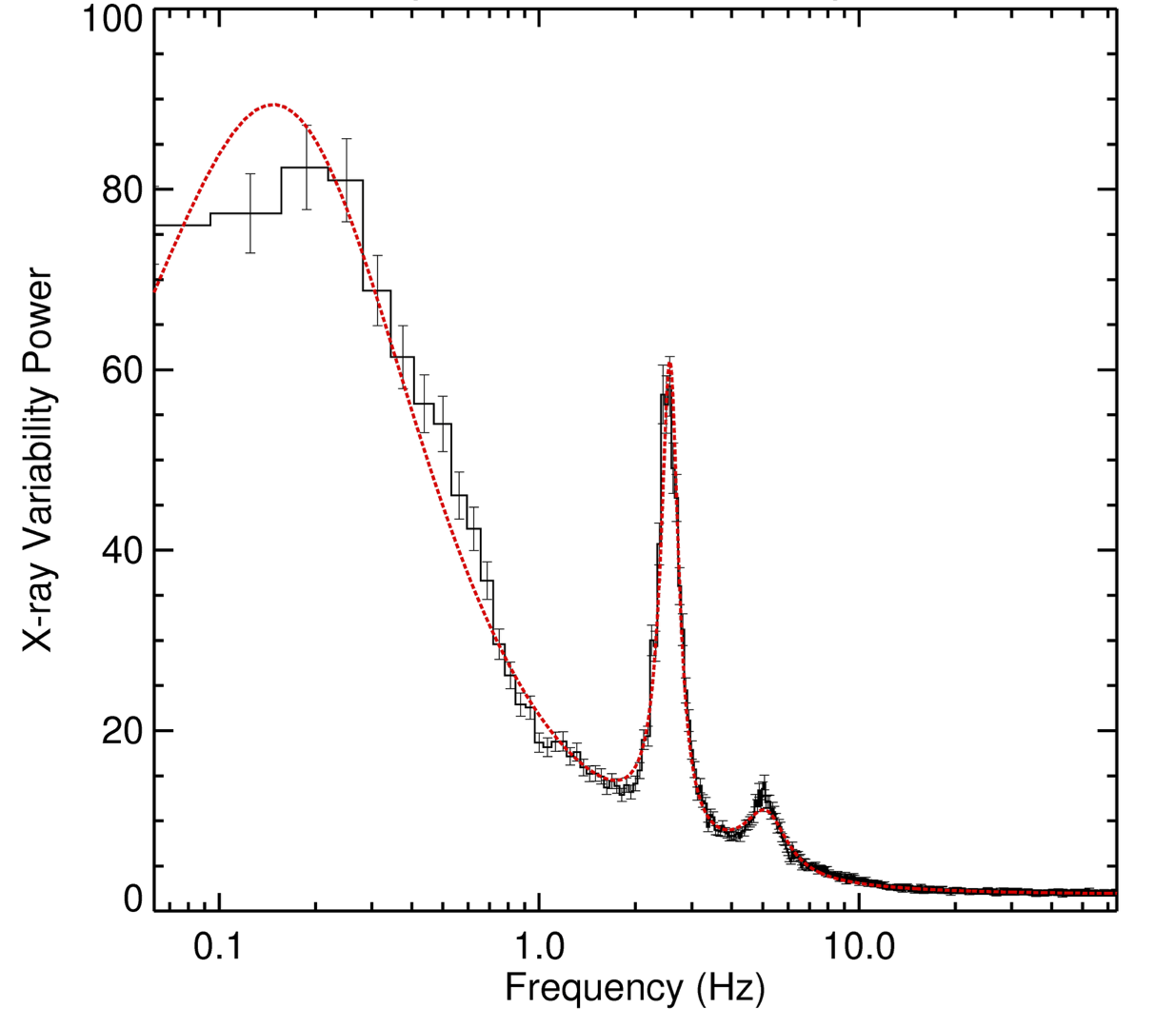NICER / ISS Science Nugget for September 29, 2017Periodic Variations in a MAXI Black Hole CandidateOf the millions of black holes lurking in our Galaxy, we are aware of just over two dozen. This is because most black holes are dormant and not actively "feeding" on nearby material. Every now and then, however, a black hole will go on an eating spree during which it pulls huge amounts of gas from a companion star. The infalling gas is heated to millions of degrees, resulting in a sudden outburst of radiation, primarily in X-rays. NICER has been observing a black hole candidate, MAXI J1535-571, following a remarkable outburst reported by the MAXI ISS investigation (on JEM-EF) on September 2nd, 2017. Analysis of NICER's time-resolved data reveals that the X-ray brightness varies in a peculiar periodic manner, with two modulation periods of roughly 0.38 and 0.19 seconds. Such modulations have been seen before in other black-hole binaries and are thought to reveal how the hot material moves under the influence of the black hole's strong gravity. The study of these modulations allows us to probe the extreme conditions at the edge of a black hole's event horizon. The attached figure shows the power spectrum (a measure of brightness as a function of modulation frequency) for MAXI J1535-571 in a segment of NICER data. Strong peaks at 2.6 and 5.2 Hz are evident, representing variability with periods of 0.38 and 0.19 seconds, respectively.
NICER continues to monitor this source and is coordinating observations with NASA's
NuSTAR observatory, the IRSF telescope in South Africa, and other resources in
space and around the world. NICER
|



